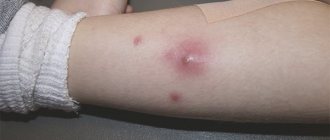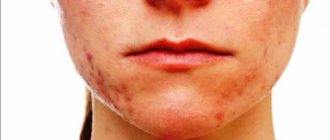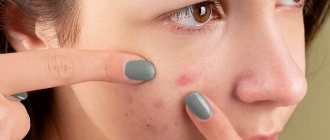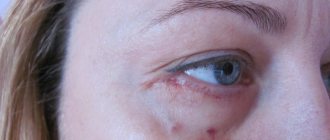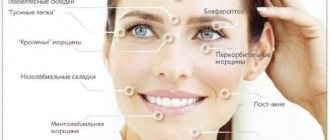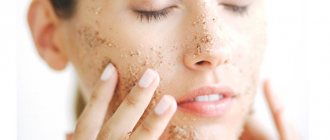- March 25, 2019
- Treatment methods
- Natali Michaelis
Keloid scars are overgrown formations of connective tissue that appear in the area of damaged skin. They can appear on the body of absolutely any person who has undergone surgery or simply injured himself. At their core, scars are the result of healing of damaged tissue. If the process proceeds normally, then after some time the scars become almost invisible, without causing cosmetic discomfort to the person.
Under the influence of the characteristics of the human body, connective tissues begin to grow greatly during the healing process, and as a result, keloid or hypertrophic scars are formed. A keloid is a dense growth of connective tissue that looks like a tumor. Quite often, various cosmetics and procedures are used to eliminate such scars. However, you can independently treat keloid scars at home using folk remedies. This is what we will talk about in this article.
Causes of pathology
Large scars can appear even due to the most minor trauma to the skin, for example, a scratch, shallow cut, or abrasion. The appearance of scars is usually provoked by the following factors:
- Genetic predisposition.
- Incorrectly aligned wound edges.
- Immunodeficiency.
- Excessive tension of the dermis when applying a suture.
- Hormonal imbalance.
- Infection in the wound.
Most often, keloid scars form on the face, back, and chest. These tumors can also appear on the legs and arms. We have discussed the causes of keloid scars. But do these tumors have any symptoms other than cosmetic discomfort?
Causes of keloid scars
The causes and mechanisms of the appearance of keloid scars are not fully known. There are factors that predispose to their occurrence. Conventionally, they can be divided into internal and external.
Internal factors:
- genetic predisposition (for example, increased levels of the enzyme that is responsible for collagen synthesis);
- deviations in the mechanism of normal wound healing;
- malfunction of the immune system (autoimmune reactions or decreased immunity);
- dark skin (more prone to keloid scar formation);
- endocrine diseases;
- excessive consumption of protein in food, etc.
External factors include any damage to the skin with or without a prolonged inflammatory reaction:
- acne on the body;
- lacerations;
- burns;
- tattoos;
- chicken pox and herpes zoster;
- piercing;
- mole removal;
- surgical interventions;
- abrasions and scratches;
- BCG vaccination.
Signs and symptoms
The shape and size of the scar can be very diverse. In addition to cosmetic discomfort, this disease may also be accompanied by the following manifestations:
- Burning.
- Painful sensations during pressure.
- Long-term healing of the scar in case of injury.
During its formation, the scar goes through several stages of development: epithelization, swelling, compaction, and softening. The disease can appear in almost any person. But most often, keloid scars form in children over 10 years of age, as well as in adults under 45 years of age. Older people and young children are not as likely to form keloid scars. The fact is that children's skin is the most elastic, which is why it heals faster.
Scientists also noted that the dependence of the formation and location of keloid scars will differ in people belonging to different races. For example, white-skinned people are more likely to develop scars on the shoulders, arms, face and chest. In Asians and Africans, scars most often appear on the lower extremities.
Causes and symptoms of keloid scars
After the integrity of the skin in the wound area is violated, fibroblasts are activated - a kind of “darner” of the skin that produces collagen. Under normal conditions, collagen is produced just enough to form a flat scar, which fades over time and becomes less noticeable. But in the case of keloids, collagen production occurs at record levels (20 times higher than normal!) and the scar tissue grows into a hard red growth, sometimes even larger in size than the wound itself. This overgrowth is called a keloid scar, which can appear on any part of the body after injury.
Unlike hypertrophic scars, keloids involve healthy, undamaged tissue and never decrease in area. They can be either flesh-colored or pinkish in color, cause pain when rubbed by clothing, and cause itching. A typical sign of a keloid scar is that after surgical removal it grows again. The main causes of keloids are skin trauma, surgical incisions, piercings, acne and drug injections. Hereditary predisposition plays a major role.
Differences from hypertrophic scar
Unlike hypertrophic scars, keloid scars in all cases extend beyond the skin damage. Hypertrophic scars only rise above the wound. During the formation of a keloid, the patient complains of pain, itching, tightening of the dermis, paresthesia in the area of the damaged area, as well as a burning sensation. As for hypertrophic scars, they hardly show themselves at all.
Over time, regression of the hypertrophic scar, its pallor and flattening, is observed. But the same cannot be said about colloidal scars. After a certain time, this disease acquires a purple or bluish tint. This is due to the growth of blood vessels into it.
Thus, the formation of a keloid will be indicated by the formation of a rough pale pink or bluish unsightly scar that looks like a tumor.
What is a keloid scar (keloid)?
A scar is the formation of connective tissue at the site of trauma to the skin and deeper tissues. There are scars:
- normotrophic;
- atrophic;
- hypertrophic;
- keloid.
A normotrophic scar is a scar that is located at the skin level, small in size, often does not differ in color from the surrounding tissues, sometimes it can be lighter.
Atrophic scars are retracted, sinking against the background of surrounding tissues. They occur in places where the skin is thinnest - temples, forehead, back of the hand.
Hypertrophic scar - in the form of a roller rises above the skin, inflamed, mobile, painless. The skin pattern on the surface of this scar is smoothed.
A keloid scar is an abnormal type of scar that is characterized by excessive growth of immature connective tissue that extends significantly beyond the original wound. A similar scar appears several weeks, or even months after damage to the skin. Keloid scars quickly increase in size, almost never go away on their own, and cause a person various unpleasant sensations. There are favorite places for keloid scars - ears, neck, chest, shoulders, back.
During its active growth, the marginal zone of the scar is bright in color and forms outgrowths, capturing healthy areas of the skin. This feature distinguishes them from hypertrophic scars.
Previously, keloid was divided into true and false. It was believed that the true one arose spontaneously, that there was no objective reason for its occurrence. And the false one arose against the background of trauma. It has now been proven that there is a factor in the occurrence of true keloid - microtraumatization. Therefore, this division is very relative.
Treatment with folk remedies
In addition to traditional methods of therapy, which consist of taking medications, using surgical techniques, physiotherapeutic procedures, as well as cosmetic methods, keloid scars can be treated with folk remedies.
Compositions from medicinal herbs restore the skin and minimize unpleasant symptoms. Treatment of keloid scars with folk remedies is distinguished by its safety and high efficiency. However, it is best to use such techniques after consultation with your doctor. In addition, it is necessary to strictly adhere to the specified proportions and dosages in the recipes.
Before you start treating keloid scars with folk remedies, you also need to take care of your diet. Experts recommend eating foods that are rich in microelements, vitamins, and protein. You need to eat more peanuts, pumpkin seeds, cheese, lean beef, and sunflower seeds. As for fried and fatty foods, it would be better to avoid them or minimize their consumption.
There are a huge number of effective recipes for the treatment of keloid scars, which have been tested for centuries. Anyone can use these recipes independently at home. Regular use of this homemade composition in the treatment of keloid scars will help eliminate the symptoms of the disease, as well as restore the skin. To do this, you just need to know which specific medicinal herbs to use and how to use them to overcome a cosmetic ailment. So, let's take a closer look at the most effective recipes for treating keloid scars with folk remedies.
Healing collection
To prepare this effective remedy, you need to mix nettle leaves with chamomile, calendula, yarrow and St. John's wort flowers in equal quantities. All these ingredients are taken in an amount of 15 g. The raw materials are brewed with boiling water, which will require 500 ml. The composition must be boiled in a water bath for a quarter of an hour. Then the container is removed from the heat in a warm place for about one hour.
Next, to treat a keloid scar with a folk remedy (filtered), you need to moisten a napkin and apply it to the problem area of the skin. Polyethylene is laid on top and secured with a scarf. After 2 hours, the bandage must be removed. For successful treatment of keloid scars with folk remedies, this procedure must be performed every day. The duration of the course should be 2 months.
Healing ointment
We continue to consider how to get rid of a keloid scar using traditional medicine recipes. You can also prepare a healing ointment at home. First you need to make a tincture. To make it, you can take spurge, celandine, Kalanchoe, dandelion, rowan, wormwood, plantain. For preparation, you can use one or several medicinal plants at once. The selected raw material is poured with 200 ml of vodka per 30 g of grass. The container is tightly closed with a lid and stored in a cool room for 2 weeks.
Next, to treat a keloid scar with ointment, you need to melt pork or badger fat in an amount of 100 g. After this, it is combined with a filtered ready-made tincture in an amount of 100 ml. All ingredients must be thoroughly mixed and simmered in a water bath for about 10-12 minutes. Then the composition cools and is applied to the problem area 3 times a day. The duration of treatment should be one month.
Stages of scar development
Wound healing occurs gradually. Therefore, there are 4 stages of scar development:
- Epithelization stage (on days 7-10). During this period, the edges of the wound are pulled together by fragile granulation tissue. There is no scar as such yet.
- Stage of formation of a “young” scar (from 10 to 30 days). The blood supply to the injured area remains good. Collagen fibers begin to form in the granulation tissue.
- Stage of “mature” scar (30-90 days). The number of collagen fibers increases significantly, and therefore the scar becomes denser. Since the number of vessels is significantly reduced, it turns pale.
- The stage of formation of the scar itself (from 4 to 12 months). The scar becomes light and dense. Collagen fibers become along the lines of greatest tension. Already at the beginning of this period, it is possible to finally assess the condition of the scar and determine whether correction will be necessary.
This is how a normal scar develops. If at the third stage one or several unfavorable factors intervene, which were described above, then instead of a normotrophic scar, a keloid scar begins to form.
Althea
Many people know about the anti-inflammatory, decongestant and absorbable properties of this plant. To prepare a remedy that can get rid of keloid scars, you need to pour 20 g of crushed dried marshmallow rhizome with cold water in an amount of 200 ml. The composition must be left to brew overnight. The finished product is used to treat scars at least 5 times a day. Marshmallow can also be replaced with mint.
Another ointment
To prepare another ointment for keloid scars, you need to take 2 cups of Sophora fruits. The ingredient is crushed and then combined with goose fat. The resulting composition must be placed in a water bath and heated for 90 minutes. The difficulty in preparing this medicine for scars is that it needs to be heated for 3 days. On the 4th day, the ointment should be boiled. You must wait until the ointment cools down, after which it is used to treat keloid scars on the body.
Treatment of keloid scars
The main problem with correcting keloid scars is that surgical intervention may not only not help, but, on the contrary, provoke additional growth of scar tissue. This is why surgical methods are quite risky, and if they are used, then after excision of the scar, the doctor prescribes hormonal ointments and compression garments to prevent relapse. The main rule is not to try to influence the scar yourself (folk remedies are very aggressive in this regard: you will lose the scar, but along with it you may lose part of the body due to an extensive burn or tissue necrosis).
Non-surgical methods for removing keloid scars are much more effective:
- Laser resurfacing.
The impact of a laser beam, controlled by force and time, helps smooth out the defect, making it paler and less noticeable. Damaged cells “evaporate” from the surface of the skin while stimulating blood circulation and lymphatic drainage. The course of procedures will take several sessions, there is no severe pain. The most effective are fractional, erbium, carbon dioxide, argon, and neodymium lasers. In the photo of keloid scars after laser treatment, positive changes are visible to the naked eye, and you don’t have to be afraid of relapses - the procedure is atraumatic.
- Hormonal therapy.
It can be used independently, but the best effect is achieved when combined with other correction methods. Corticosteroid injections reduce fibroblast activity, reduce collagen production, and prevent the defect from recurring in the same location.
- Compression therapy.
Special patches with silicone thin out scar tissue, but they need to be worn around the clock for 3-4 months, which is not always possible.
- Liquid nitrogen (cryotherapy)
. The essence of the method is several cycles of freezing pathologically altered cells. A good result is observed in 2/3 of cases, but the disadvantages of the procedure include pain and the risk of pigmentation in the future.
- External means
. Ointments and creams (for example, Dermatix, Contratubes, Kelo-Kot, etc.) are not able to completely eliminate the scar, but they can soften and moisturize the tissue, which has a positive effect on the appearance of the keloid as a whole. It is good to use ointments at the stage of scar formation, when it is still fresh, but only after the crusts have completely fallen off!
Other methods for correcting keloids are being developed (the creation of preparations such as “Collost” based on hyaluronic acid, radiation exposure, interferon treatment), but their effectiveness has not been sufficiently proven.
The effectiveness of a particular method depends on the individual characteristics of the patient’s body and predisposition to the formation of keloid scars.
For some, it will be enough to use ointments and creams for scars as a preventive measure, while others are forced to undergo complex treatment for months. Fortunately, medicine can offer different options for getting rid of the hated keloids, the main thing is not to despair and find “your” method that suits you best. This article is for informational purposes only, please consult your doctor for details!
Beeswax
Various oils with the addition of an ingredient such as beeswax will help get rid of this cosmetic ailment. The simplest and most affordable option is sunflower oil and wax. Heat 400 ml of vegetable oil, add 100 g of beeswax, mix everything thoroughly. The product should then be simmered over low heat for 15 minutes. After this, the composition is cooled and used to treat keloid scars 2 times a day. Sunflower oil can also be replaced with sea buckthorn, corn or rosehip oil.
Melon and eggs
Another good remedy for treating keloid scars is melon and eggshells. It is necessary to combine melon seeds with egg shells in equal quantities. The ingredients are thoroughly mixed, after which vegetable oil is added. This should give you a mass of porridge consistency. The finished composition is applied to the affected area of the skin once a day. The duration of therapy is 2 months.
Keloid scars
What to do if keloid scars occur
There is no need to do anything on your own so as not to aggravate the situation (remember - keloid scars tend to grow, and even minimal trauma to them can significantly speed up this process).
In addition, it is advisable to avoid visiting baths, saunas, and taking hot baths, since thermal exposure negatively affects scarring of the skin. Treatment of keloid scars
To correct keloid scars, there are several methods, the use of which depends on the stage of scar formation.
At the stage of a young scar, when it is actively growing, the task is to stop its growth and reduce pain. To do this, corticosteroid drugs are injected directly into the scar tissue.
Good results are demonstrated by bukki therapy - irradiation of the scar with gamma rays, which reduces pain, a feeling of skin tightness, itching, slows down or completely stops growth with subsequent blanching of the scar. In parallel, external preparations that soften scar tissue can be prescribed.
For young scars, so-called pressure therapy is used (silicone plates, elastic roll and tubular bandages, etc.), achieving a double effect - softening the scar and flattening it.
Treatment of keloid scars is a long process that requires careful adherence to all doctor’s recommendations.
At the stage of a mature scar, the doctor must first make sure that its growth is complete and the scar tissue behaves calmly. Then the task is to make it less noticeable (it is impossible to completely remove a keloid scar, since the correction of scar deformation is carried out strictly within the boundaries of the scar, and minimal impact on healthy surrounding tissue can trigger the resumption of keloid growth). To do this, laser resurfacing or excision of the scar with a scalpel is used.
Sources:
- Federal clinical guidelines for the management of patients with keloid and hypertrophic scars. Clinical recommendations of the Russian Federation (Russia). Russian Society of Dermatovenereologists and Cosmetologists. Moscow, 2015. 16 p.
- Clinical protocol for the diagnosis and treatment of patients with scarred skin lesions. Section StAR "Association of Maxillofacial Surgeons and Dental Surgeons". Moscow, 2014. 40 p.
IMPORTANT!
The information in this section cannot be used for self-diagnosis and self-treatment. In case of pain or other exacerbation of the disease, diagnostic tests should be prescribed only by the attending physician. To make a diagnosis and properly prescribe treatment, you should contact your doctor.
Compress
People have known about the wound-healing and anti-inflammatory properties of cabbage since ancient times. In addition, this vegetable is considered a source of vitamin A, which promotes skin regeneration. To prepare a compress, you need to take a few cabbage leaves and chop them thoroughly. You can use a blender for grinding. The resulting mass is mixed with honey. The finished paste is laid out on gauze folded in several layers, which is then applied to the affected area. Wrap the compress on top with plastic wrap and secure it. This procedure should be carried out twice a day.
